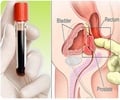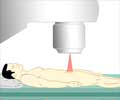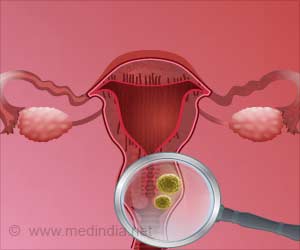About one-third of men with prostate cancer receive some type of radiation therapy.

‘Men with prostate cancer can receive shorter courses of radiation therapy than what is currently considered standard.’





Currently, standard radiation treatment for prostate cancer involves daily treatments that can last up to nine weeks.
Men with prostate cancer can receive shorter courses of radiation therapy than what is currently considered standard, according to Justin Bekelman, an associate professor of Radiation Oncology, Medical Ethics, and Health Policy at the University of Pennsylvania's Perelman School of Medicine and Abramson Cancer Center.
In his call for practice change, Bekelman cites research showing that moderate hypofractionation is just as effective at treating cancer, while costing less and easing the burden on patients. The commentary was published online by the International Journal of Radiation Oncology Biology and Physics and was co-authored by W. Robert Lee, a professor of Radiation Oncology at the Duke University School of Medicine.
"Moderate hypofractionation is high-quality, patient-friendly cancer care at lower cost," Bekelman said. "It is equivalent to longer radiation schedules in curing prostate cancer, has similar side effects, and is more convenient. Men can get back to their lives more quickly, which means less time away from the activities they enjoy and less time distracted by their cancer treatments."
Moderate hypofractionation uses a slightly higher dosage of radiation for each daily treatment compared to what is currently used for most other radiation regimens in the United States. Three multi-center randomized trials compared the shorter and longer approaches. All told, the CHHiP, NRG 0415, and PROFIT trials looked at 5,537 patients with mostly low and intermediate risk prostate cancer.
Advertisement
Bekelman points out that fewer radiation treatments not only means less out-of-pocket costs and fewer visits to treatment centers for patients; it also means lower costs for payers and employers.
Advertisement
While moderate hypofractionation should now be discussed routinely with patients, Bekelman cautions the trials do not offer any evidence for more extreme regimens lasting as few as five radiation treatments. These much shorter courses may have additional risks and remain under study in several large U.S. and European clinical trials.
This is not the first time Bekelman has argued for moderately shorter radiation schedules. Two years ago, he found two-thirds of women treated for early-stage breast cancer in the U.S. receive longer radiation therapy than necessary, despite research that pointed to the need for change years earlier. This time around, he says he doesn't want to see this history of overtreatment repeat itself.
"If we take a clear-eyed look at the evidence, it is unmistakable that many men can get radiation in 4 to 5 weeks, a shorter time frame than in the past," Bekelman said. "We should move forward to adopt moderate hypofractionation radiation schedules in routine care for appropriate men with prostate cancer."
Source-Eurekalert

![Prostate Specific Antigen [PSA] & Prostate Cancer Diagnosis Prostate Specific Antigen [PSA] & Prostate Cancer Diagnosis](https://images.medindia.net/patientinfo/120_100/prostate-specific-antigen.jpg)












